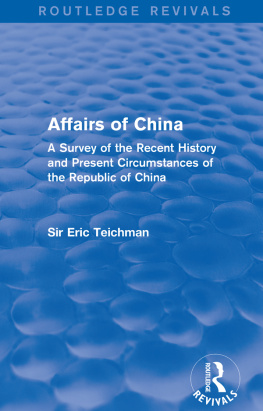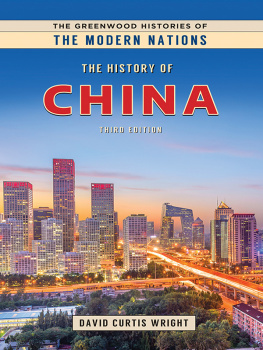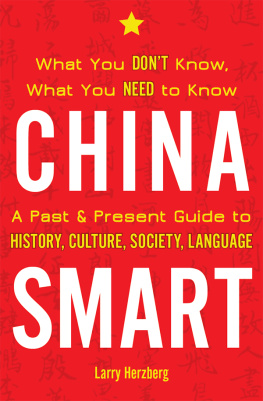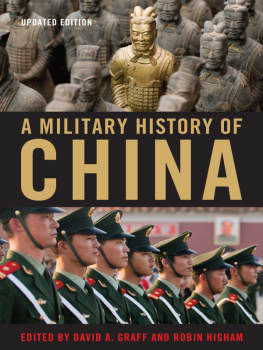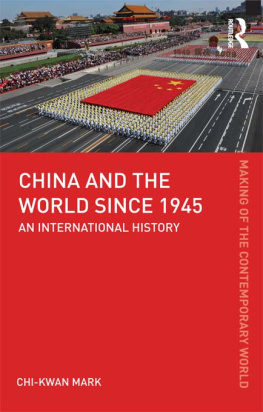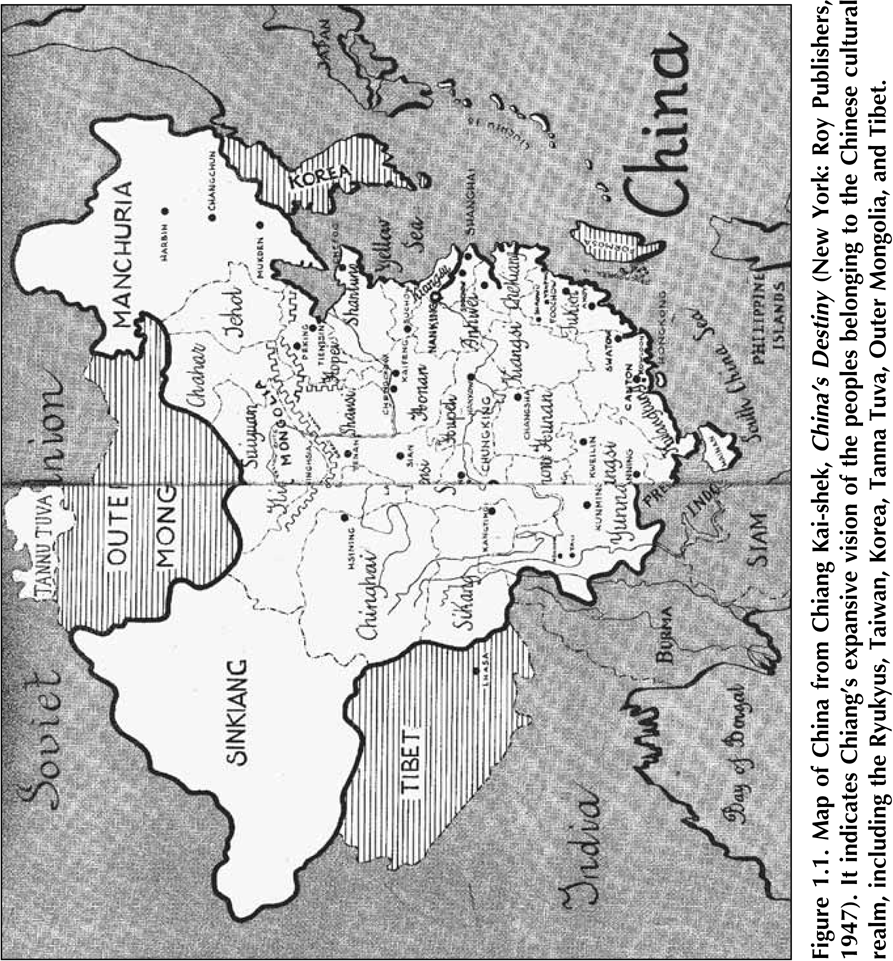About the Contributors
Elif Ak etin , Lecturer
Department of History, Durham University, UK
BA, Smith College, Massachusetts; MA, Bogazii University, Istanbul; PhD,
University of Washington
Bridie Andrews , Associate Professor of History
Department of History, Bentley College, Massachusetts, USA
BSc, University of Edinburgh; PhD, Cambridge University
Tim Barrett , Research Professor of East Asian History
Departments of the Study of Religions and of History, School of Oriental
and African Studies, London, UK
BA, Cambridge University; PhD, Yale University, Connecticut
Felix Boecking , Lecturer in Modern Chinese Economic and Political History
School of History, Classics and Archaeology, University of Edinburgh, UK
BA, Oxford University; PhD, Cambridge University
Michael C. Brose , Associate Professor
Department of History, University of Wyoming, USA
BS, Seattle Pacific University; MSc, University of British Columbia; MA,
University of Washington; PhD, University of Pennsylvania
Marjorie Dryburgh , Lecturer
School of East Asian Studies, University of Sheffield, UK
BA, Durham University; PhD, Durham University
Imre galambos , Lecturer in Pre-Modern Chinese Studies
University of Cambridge, UK
MA, ELTE University, Budapest; MA, University of California at Berkeley;
PhD, University of California at Berkeley
Stanley e. Henning , Independent scholar
Hawaii, USA
BA, Virginia Military Institute; MA, University of Hawaii
Christian Hess , Assistant Professor
Faculty of Liberal Arts, Sophia University, Japan
BA, University of California at Davis; MA, University of California at San
Diego; PhD, University of California at San Diego
Clara Wing-chung Ho , Professor
Department of History, Hong Kong Baptist University, Hong Kong
BA, University of Hong Kong; MPhil, University of Hong Kong; PhD,
University of Hong Kong
Judd kinzley , Assistant Professor
Department of History, University of WisconsinMadison, USA
BA, Macalester College, Minnesota; MA, Washington University in St. Louis;
PhD, University of California at San Diego
Fabio Lanza , Associate Professor
Departments of East Asian Studies and History, University of Arizona, USA
BA, University of Venice, Ca Foscari; MA, Columbia University, New York;
PhD, Columbia University, New York
Peter Lorge , Assistant Professor of History and Asian Studies
Department of History, Vanderbilt University, Tennessee, USA
BA, University of Texas at Austin; MA, University of Reading; PhD, University
of Pennsylvania
Julia Lovell , Senior Lecturer
Department of History, Classics and Archaeology, Birkbeck College,
University of London, UK
BA, Cambridge University; MPhil, Cambridge University; PhD, Cambridge
University
Rana Mitter , Professor of the History and Politics of Modern China
Institute for Chinese Studies, Oxford University, UK
BA, Cambridge University; PhD, Cambridge University
Barbara Mittler , Professor
Institut fr Sinologie, Ruprecht-Karls-Universitt Heidelberg, Germany
BA, Oxford University; PhD, Heidelberg University
Ruth Mostern , Associate Professor
School of Social Sciences, Humanities and Arts, University of California
Merced, USA
BS, Georgetown University, Washington DC; MA, University of California at
Berkeley; PhD, University of California at Berkeley
Peter C. Perdue , Professor
Department of History, Yale University, Connecticut, USA
BA, Harvard College, Massachusetts; MA, Harvard University, Massachusetts;
PhD, Harvard University, Massachusetts
Hai ren , Associate Professor
Departments of East Asian Studies and Anthropology, University of Arizona,
USA
BA, Sichuan University; MA, University of Washington; PhD, University of
Washington
Andres rodriguez , Lecturer in Modern Asian History
School of Humanities, University of Southampton, UK
BA, Universidad Catolica de Chile; MPhil, Oxford University; DPhil, Oxford
University
Tansen sen , Associate Professor
Department of History, Baruch College, City University of New York, USA
BA, Beijing Languages Institute; MA, Peking University; PhD, University of
Pennsylvania
Elliot sperling , Associate Professor
Department of Central Eurasian Studies, Indiana University, USA
BA, Queens College, City University of New York; MA, Indiana University;
PhD, Indiana University
Naomi standen , Professor of Medieval History
School of History and Cultures, University of Birmingham, UK
BA, London University, Queen Mary College; PhD, Durham University
Wasana Wongsurawat , Lecturer
Department of History, Chulalongkorn University, Bangkok, Thailand
BA, University of Chicago; MSt, Oxford University; DPhil, Oxford University
Ling zhang , Assistant Professor
Department of History, Boston College, Massachusetts, USA
BA, Peking University; MPhil, Cambridge University; PhD, Cambridge
University
Acknowledgments
This book seemed necessary to me, and I would like to thank all those who thought so toocontributors, supporters, the two anonymous readers for the pressand thank and apologize to those whose (sometimes severe) critiques of the project have, I hope, improved where they could not dissuade. I am grateful to the authors for their hard work and patience, and to Susan McEachern at Rowman & Littlefield for her imagination in taking on this project and her still greater patience in seeing it through. As editor, I naturally take responsibility for any remaining (or introduced) faults. This was a project that had to be fitted into stolen moments and nonexistent gaps, and I have to apologize to my family for all the early-morning typing and late deliveries of their wake-up cups of tea.
Naomi Standen
Birmingham
1
The Chinese
Peter C. Perdue
One of modern Chinas most powerful ideas has asserted that the Chinese people have formed a single collective unit from ancient times through the present. This nationalist claim of primordial unity still retains a strong grip on academic history and popular consciousness. The historian who wants to tell a more nuanced story has to debunk this idea but also explain why it has such broad appeal.
As Chiang Kai-shek, the ruler of Nationalist China, expressed it, According to its historic development, our Chinese nation ( Zhonghua minzu ) was formed by the blending of numerous clans. These clans were originally branches of the same race, spreading to the East of the Pamir plateau, along the valleys of the Yellow, the Huai, the Yangzi, the Heilongjiang, and the Pearl rivers. During the past five thousand years, with increasing contacts and migrations, they have been continuously blended into a nation. But the motive power of that blending was by assimilation rather than conquest.
Chiang, like Sun Yat-sen, believed that China had been a united nation for five thousand years, since the dawn of prehistory. The clans ( zongzu ) had spread out from the Yellow River valley to settle the historical core of China (China Proper), modern Manchuria, Mongolia, Xinjiang, and Tibet, as well as Taiwan and even the Ryukyu islands (see figure 1.1). The Nationalist Party claimed sovereignty over all the territory occupied by these mingled clans. Although it had overthrown the barbarian Manchu Qing dynasty, it laid claim to all the territory controlled by the Qing during its maximal period of expansion in the eighteenth century. But the Qing conquests only restored the deeply rooted unity of peoples that had already existed several thousand years ago:



